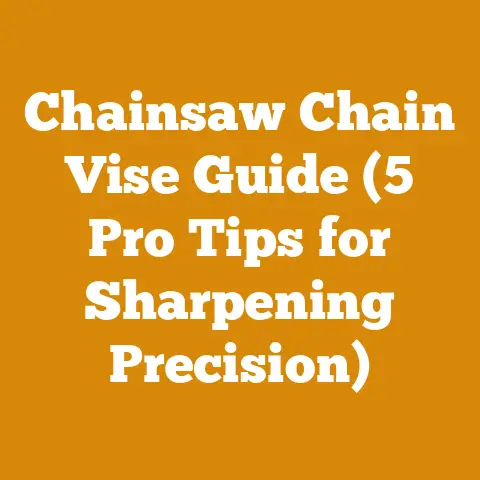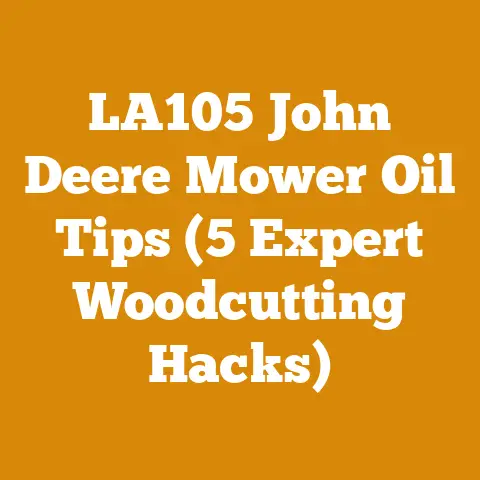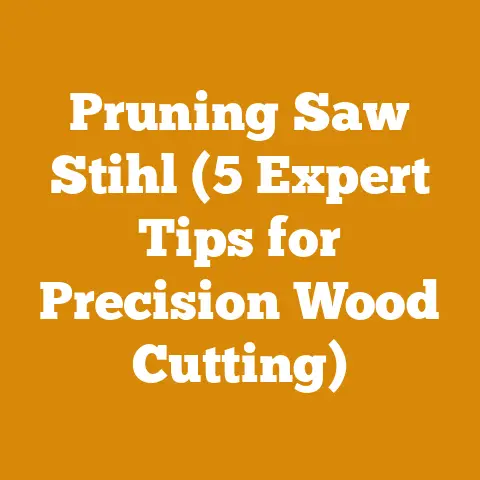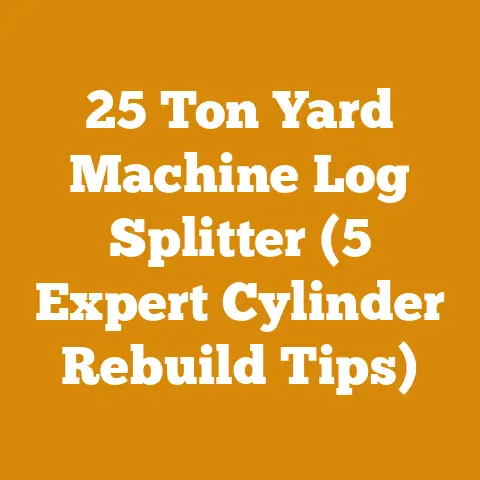Wood Shed Roof Options Explained (5 Pro Tips for Durability)
Isn’t it strange? We build wood sheds to protect our firewood from the elements, yet the very roof meant to shield it is often the first thing to succumb to the relentless forces of nature. It’s a paradox I’ve wrestled with for years, spending countless hours in the field, designing and repairing wood sheds to withstand the harshest conditions. Through trial and error, and a healthy dose of hands-on experience, I’ve learned what truly makes a wood shed roof durable. Let me share my insights with you.
Wood Shed Roof Options Explained (5 Pro Tips for Durability)
Understanding the Importance of a Durable Wood Shed Roof
A wood shed roof isn’t just a cosmetic feature; it’s the primary defense against rain, snow, and sun. A compromised roof can lead to waterlogged firewood, which is a nightmare to ignite and burns inefficiently. Imagine spending hours splitting and stacking wood, only to have it rendered useless by a leaky roof! This is why I always emphasize the importance of investing in a robust roofing system from the start.
- Protection from the Elements: Rain and snow are the biggest threats. Wet wood takes longer to dry and can even rot.
- Preventing Mold and Rot: Moisture promotes fungal growth, which degrades the wood and reduces its heating value.
- Maintaining Wood Quality: A dry environment ensures the wood seasons properly, resulting in hotter, cleaner burns.
- Long-Term Cost Savings: A durable roof minimizes the need for repairs and replacements, saving you money in the long run. I’ve seen sheds with poorly constructed roofs needing replacement within just five years, while others with proper roofing last for decades.
- Overall Structure Integrity: The roof protects the entire shed structure from water damage, extending its lifespan.
Takeaway: A durable wood shed roof is essential for preserving the quality of your firewood and protecting your investment.
Pro Tip #1: Choosing the Right Roofing Material
Selecting the appropriate roofing material is the cornerstone of a durable wood shed. There’s a wide array of options, each with its own strengths and weaknesses. I’ve worked with everything from asphalt shingles to metal roofing, and I’ve learned that the best choice depends on factors like your budget, climate, and aesthetic preferences.
Asphalt Shingles: A Budget-Friendly Option
Asphalt shingles are a popular choice due to their affordability and ease of installation. They come in various styles and colors, allowing you to match your wood shed to your home. However, they may not be the most durable option in extreme weather conditions.
- Pros: Affordable, easy to install, widely available.
- Cons: Shorter lifespan compared to other materials, susceptible to wind damage, can deteriorate under prolonged sun exposure.
- Lifespan: Typically 15-25 years.
- Cost: $1-$3 per square foot.
- Considerations: Choose architectural shingles for better wind resistance. Ensure proper ventilation to prevent overheating.
Metal Roofing: A Long-Lasting Investment
Metal roofing is a premium option that offers exceptional durability and longevity. It’s resistant to fire, wind, and impact, making it ideal for areas with harsh weather conditions. While the initial cost is higher, the long-term benefits make it a worthwhile investment.
- Pros: Extremely durable, long lifespan, fire-resistant, energy-efficient (reflective properties).
- Cons: Higher initial cost, can be noisy during rain, requires specialized installation.
- Lifespan: 40-70 years.
- Cost: $5-$15 per square foot.
- Considerations: Choose thicker gauge metal for better durability. Consider adding insulation to reduce noise.
Wood Shakes: A Rustic Aesthetic
Wood shakes offer a charming, rustic look that blends seamlessly with natural surroundings. However, they require regular maintenance to prevent rot and insect infestation. I’ve used wood shakes on several projects, and while they look beautiful, they demand more upkeep than other options.
- Pros: Natural aesthetic, environmentally friendly.
- Cons: Requires regular maintenance, susceptible to rot and insect infestation, shorter lifespan compared to metal.
- Lifespan: 20-40 years with proper maintenance.
- Cost: $4-$10 per square foot.
- Considerations: Treat with preservatives to prevent rot and insect damage. Ensure proper ventilation to promote drying.
Corrugated Polycarbonate: A Lightweight and Translucent Choice
Corrugated polycarbonate panels are a lightweight and translucent option that allows natural light to filter through. This can be beneficial for sheds where you want to be able to see the wood without artificial lighting. They are also relatively easy to install.
- Pros: Lightweight, translucent, easy to install, relatively inexpensive.
- Cons: Not as durable as metal or wood, can become brittle over time, may not withstand heavy snow loads.
- Lifespan: 10-20 years.
- Cost: $2-$5 per square foot.
- Considerations: Choose UV-resistant panels to prevent discoloration and degradation. Ensure proper support structure to handle wind and snow loads.
Rubber Roofing: A Recycled and Durable Option
Rubber roofing, often made from recycled tires, is a durable and eco-friendly choice. It’s resistant to cracking, tearing, and impact, making it a good option for areas with extreme weather.
- Pros: Durable, eco-friendly, resistant to cracking and tearing, long lifespan.
- Cons: Can be more expensive than asphalt shingles, may have a rubbery odor initially.
- Lifespan: 30-50 years.
- Cost: $4-$8 per square foot.
- Considerations: Choose a reputable brand with a good warranty. Ensure proper installation to prevent leaks.
Takeaway: Carefully consider the pros and cons of each roofing material before making a decision. Factors like climate, budget, and aesthetic preferences will influence your choice.
Pro Tip #2: Proper Roof Pitch and Design
The roof pitch, or slope, plays a crucial role in water runoff and snow shedding. A steeper pitch allows water and snow to slide off more easily, preventing buildup and reducing the risk of leaks. I’ve seen sheds with flat or shallow roofs collapse under the weight of heavy snow, so I always recommend a sufficient pitch.
Determining the Ideal Pitch
The ideal roof pitch depends on your local climate and the type of roofing material you choose. A general rule of thumb is to have a minimum pitch of 4/12 (4 inches of rise for every 12 inches of run). In areas with heavy snowfall, a steeper pitch of 6/12 or greater is recommended.
- 4/12 Pitch: Suitable for moderate rainfall and snowfall.
- 6/12 Pitch: Ideal for heavy snowfall and areas with frequent rain.
- 8/12 Pitch or Greater: Recommended for extreme weather conditions.
Roof Design Considerations
In addition to pitch, the overall roof design can impact its durability. Overhangs, for example, protect the shed walls from rain and sun, extending their lifespan. Gutters and downspouts can also help channel water away from the foundation, preventing moisture damage.
- Overhangs: Extend the roof beyond the walls to protect them from the elements. A minimum overhang of 12 inches is recommended.
- Gutters and Downspouts: Channel water away from the foundation to prevent moisture damage. Ensure they are properly sized and maintained to prevent clogging.
- Ventilation: Proper ventilation helps prevent condensation and moisture buildup, extending the lifespan of the roofing materials.
Takeaway: Choose a roof pitch that is appropriate for your climate and roofing material. Consider adding overhangs, gutters, and ventilation to further enhance durability.
Pro Tip #3: Strengthening the Roof Structure
The roof structure is the backbone of your wood shed, providing the necessary support for the roofing materials. A weak or poorly constructed structure can lead to sagging, leaks, and even collapse. I’ve seen firsthand the consequences of skimping on structural support, and it’s not a pretty sight.
Choosing the Right Lumber
The type and size of lumber you use for the roof structure will depend on the size of your wood shed and the expected snow load. Pressure-treated lumber is recommended for its resistance to rot and insect infestation.
- Rafters: Use 2×6 or 2×8 lumber spaced 16-24 inches apart, depending on the span.
- Ridge Beam: Use 2×8 or 2×10 lumber, depending on the span.
- Sheathing: Use 1/2-inch or 3/4-inch plywood or OSB (oriented strand board).
Proper Fastening Techniques
Using the correct fasteners and fastening techniques is crucial for creating a strong and durable roof structure. Galvanized nails or screws are recommended for their resistance to rust.
- Nailing: Use 8d or 10d nails for framing connections. Ensure nails penetrate deep into the wood.
- Screwing: Use exterior-grade screws for stronger connections. Screws provide better holding power than nails.
- Joist Hangers: Use joist hangers to attach rafters to the ridge beam and wall plates. Joist hangers provide a secure and reliable connection.
Reinforcing Weak Points
Identify and reinforce any potential weak points in the roof structure. This may include adding extra support to areas that are prone to sagging or using metal connectors to strengthen joints.
- Gussets: Use gussets to reinforce corners and joints.
- Blocking: Add blocking between rafters to prevent them from twisting or buckling.
- Metal Connectors: Use metal connectors to strengthen joints and connections.
Takeaway: Use high-quality lumber, proper fastening techniques, and reinforcement strategies to create a strong and durable roof structure.
Pro Tip #4: Ensuring Proper Ventilation
Proper ventilation is essential for preventing moisture buildup and extending the lifespan of your wood shed roof. Condensation can form inside the shed, leading to rot, mold, and mildew. I’ve seen sheds with inadequate ventilation suffer significant damage in just a few years.
Types of Ventilation
There are several types of ventilation you can incorporate into your wood shed roof, including ridge vents, soffit vents, and gable vents.
- Ridge Vents: Located at the peak of the roof, ridge vents allow warm, moist air to escape.
- Soffit Vents: Located under the eaves, soffit vents allow fresh air to enter the shed.
- Gable Vents: Located in the gable ends of the shed, gable vents provide cross-ventilation.
Calculating Ventilation Requirements
The amount of ventilation you need depends on the size of your wood shed. A general rule of thumb is to have 1 square foot of ventilation for every 300 square feet of attic space.
- Example: For a 10×12 foot shed (120 square feet), you would need at least 0.4 square feet of ventilation.
Preventing Obstructions
Ensure that ventilation openings are not obstructed by insulation, debris, or other materials. Regularly inspect and clean vents to maintain proper airflow.
- Screening: Use screens to prevent insects and rodents from entering the shed through the vents.
- Insulation Baffles: Install insulation baffles to prevent insulation from blocking soffit vents.
- Regular Cleaning: Clean vents regularly to remove debris and ensure proper airflow.
Takeaway: Incorporate proper ventilation into your wood shed design to prevent moisture buildup and extend the lifespan of your roof.
Pro Tip #5: Regular Maintenance and Inspections
Even the most durable wood shed roof requires regular maintenance and inspections. By catching problems early, you can prevent them from escalating into costly repairs. I recommend inspecting your roof at least twice a year, preferably in the spring and fall.
Inspecting for Damage
Look for signs of damage, such as missing shingles, cracks, leaks, or sagging. Pay close attention to areas around vents, chimneys, and other protrusions.
- Missing Shingles: Replace missing shingles promptly to prevent water damage.
- Cracks: Seal cracks with roofing sealant to prevent leaks.
- Leaks: Identify the source of leaks and repair them immediately.
- Sagging: Address sagging areas by reinforcing the roof structure.
Cleaning Debris
Remove any debris, such as leaves, branches, or moss, that can accumulate on the roof. Debris can trap moisture and promote rot.
- Leaf Removal: Use a leaf blower or broom to remove leaves from the roof.
- Branch Removal: Trim overhanging branches to prevent them from falling on the roof.
- Moss Removal: Remove moss with a stiff brush or moss killer.
Preventing Ice Dams
In areas with heavy snowfall, ice dams can form along the eaves of the roof. Ice dams can trap water and cause leaks.
- Roof Rakes: Use a roof rake to remove snow from the roof before it can turn into ice.
- Heat Cables: Install heat cables along the eaves to prevent ice dams from forming.
- Proper Insulation: Ensure proper insulation in the attic to prevent heat from escaping and melting snow on the roof.
Takeaway: Regular maintenance and inspections are essential for prolonging the lifespan of your wood shed roof. Catching problems early can prevent costly repairs down the road.
Case Studies: Real-World Examples of Wood Shed Roof Durability
To illustrate the importance of these pro tips, let me share a couple of case studies from my own experience.
Case Study 1: The Collapsed Shed
A few years ago, a neighbor of mine decided to build a wood shed using scrap lumber and a flat roof. He thought he was saving money, but he quickly learned his lesson. The first winter, a heavy snowfall caused the roof to collapse, burying his firewood under a pile of debris. The cost of repairing the shed and replacing the ruined firewood far exceeded the money he thought he had saved. This case highlights the importance of using proper materials and design.
Case Study 2: The Long-Lasting Shed
On the other hand, I have a client who invested in a well-built wood shed with a metal roof and proper ventilation. He followed all the pro tips I’ve outlined in this guide, and his shed has stood strong for over 20 years. He’s only had to perform minor maintenance over the years, and his firewood has always been dry and ready to burn. This case demonstrates the long-term benefits of investing in a durable wood shed roof.
Choosing the Right Fasteners: A Deeper Dive
I touched on fasteners earlier, but it’s worth diving deeper. The type of fastener you use can significantly impact the longevity of your wood shed roof.
- Galvanized Nails: These are a standard choice for general construction. The galvanization process helps prevent rust, making them suitable for outdoor use. However, they can still corrode over time, especially in coastal areas with high salt content.
- Stainless Steel Nails: For maximum rust resistance, stainless steel nails are the way to go. They are significantly more expensive than galvanized nails, but they offer superior protection against corrosion, making them ideal for harsh environments.
- Exterior-Grade Screws: Screws provide much better holding power than nails. Exterior-grade screws are coated to resist rust and corrosion. They are particularly useful for securing roofing materials to the frame.
- Self-Tapping Screws: These screws are designed to drill their own pilot hole, making them ideal for attaching metal roofing to the frame. They often have a rubber washer to create a watertight seal.
Important Note: Always use the correct type and size of fastener for the job. Using the wrong fastener can compromise the integrity of the roof.
Understanding Wood Decay and Prevention
Wood decay is a major threat to any wood structure, including your wood shed roof. Understanding the different types of wood decay and how to prevent them is crucial for ensuring the longevity of your shed.
- Brown Rot: This type of decay breaks down the cellulose in the wood, causing it to turn brown and crumble. It’s common in softwoods and is often caused by fungi.
- White Rot: This type of decay breaks down both the cellulose and lignin in the wood, causing it to turn white or yellowish. It’s common in hardwoods and is often caused by fungi.
- Soft Rot: This type of decay occurs in very wet conditions and is often caused by bacteria. It’s common in wood that is in contact with the ground.
Prevention:
- Pressure-Treated Lumber: Use pressure-treated lumber for the roof structure to resist rot and insect infestation.
- Proper Ventilation: Ensure proper ventilation to prevent moisture buildup.
- Regular Inspections: Inspect the roof regularly for signs of decay and address any problems promptly.
- Wood Preservatives: Apply wood preservatives to protect the wood from decay and insect infestation.
The Importance of Proper Flashing
Flashing is a thin, impervious material used to prevent water from entering the roof structure at vulnerable points, such as around chimneys, vents, and skylights. Proper flashing is essential for preventing leaks and water damage.
-
Types of Flashing:
- Step Flashing: Used along the sides of chimneys and walls.
- Base Flashing: Used at the base of chimneys and walls.
- Counter Flashing: Covers the top edge of the base flashing.
- Drip Edge Flashing: Installed along the eaves to prevent water from running behind the fascia board.
-
Installation:
- Flashing should be installed according to the manufacturer’s instructions.
- Ensure that flashing is properly sealed to prevent water from entering.
- Use roofing sealant to seal any gaps or cracks.
Addressing Common Wood Shed Roof Problems
Even with the best planning and execution, problems can still arise with your wood shed roof. Here are some common issues and how to address them:
- Leaks: Identify the source of the leak and repair it promptly. This may involve replacing damaged shingles, sealing cracks, or repairing flashing.
- Sagging: Sagging can be caused by a weak roof structure or excessive weight. Reinforce the roof structure by adding extra support or removing excess weight.
- Missing Shingles: Replace missing shingles as soon as possible to prevent water damage.
- Moss Growth: Moss can trap moisture and promote rot. Remove moss with a stiff brush or moss killer.
- Insect Infestation: Treat insect infestations with appropriate insecticides.
Building Codes and Regulations
Before starting any construction project, it’s important to check with your local building department to ensure that you comply with all applicable building codes and regulations. These codes may specify requirements for roof pitch, structural support, ventilation, and fire safety.
- Permits: You may need to obtain a building permit before constructing a wood shed.
- Inspections: Your wood shed may be subject to inspections during and after construction.
The Environmental Impact of Roofing Materials
When choosing roofing materials, it’s important to consider their environmental impact. Some materials are more sustainable than others.
- Recycled Materials: Consider using roofing materials made from recycled materials, such as rubber roofing made from recycled tires.
- Sustainable Materials: Choose roofing materials that are sustainably harvested, such as wood shakes from responsibly managed forests.
- Energy Efficiency: Choose roofing materials that are energy-efficient, such as metal roofing with reflective properties.
Advanced Techniques for Wood Shed Roof Construction
For those looking to take their wood shed roof construction to the next level, here are some advanced techniques to consider:
- Green Roofs: A green roof is a roof that is covered with vegetation. Green roofs can provide insulation, reduce stormwater runoff, and improve air quality.
- Solar Panels: Install solar panels on your wood shed roof to generate electricity.
- Rainwater Harvesting: Collect rainwater from your wood shed roof for use in your garden or for other non-potable purposes.
Calculating Material Costs: A Practical Example
Let’s say you’re building a 10×12 foot wood shed and you’ve decided to use asphalt shingles for the roof. Here’s a breakdown of the estimated material costs:
- Asphalt Shingles: 120 square feet (10×12) / 100 square feet per bundle = 1.2 bundles. Round up to 2 bundles. At $30 per bundle, the cost is $60.
- Roofing Felt: 120 square feet. At $0.20 per square foot, the cost is $24.
- Nails: 1 pound. At $5 per pound, the cost is $5.
- Drip Edge: 40 feet (perimeter of the roof). At $2 per foot, the cost is $80.
- Flashing: 20 feet. At $3 per foot, the cost is $60.
Total Estimated Material Cost: $229
Note: This is just an estimate. Actual costs may vary depending on the specific materials you choose and your local prices.
Safety First: Precautions During Roof Construction
Safety should always be your top priority when working on a roof. Here are some important safety precautions to follow:
- Wear appropriate safety gear: This includes a hard hat, safety glasses, gloves, and slip-resistant shoes.
- Use a safety harness: When working on a sloped roof, use a safety harness to prevent falls.
- Work in good weather: Avoid working on the roof in wet or windy conditions.
- Use caution when using power tools: Follow the manufacturer’s instructions and wear appropriate safety gear.
- Have a spotter: Have someone on the ground to assist you and call for help if needed.
The Future of Wood Shed Roof Design
As technology advances and environmental concerns grow, the future of wood shed roof design is likely to see some exciting changes. We can expect to see more innovative materials, more sustainable designs, and more integration with smart home technology.
- Advanced Materials: New roofing materials are being developed that are more durable, more energy-efficient, and more environmentally friendly.
- Sustainable Designs: Wood shed roof designs will increasingly focus on sustainability, incorporating features like green roofs, solar panels, and rainwater harvesting systems.
- Smart Home Integration: Wood sheds may be integrated with smart home technology, allowing you to monitor the temperature and humidity inside the shed, control ventilation, and even track the amount of firewood you have on hand.
Conclusion: Building a Wood Shed Roof That Lasts
Building a durable wood shed roof is an investment in the longevity of your firewood supply and the overall integrity of your shed. By following the pro tips I’ve shared in this guide, you can create a roofing system that will withstand the elements and protect your investment for years to come. Remember to choose the right materials, design a proper roof pitch, strengthen the roof structure, ensure proper ventilation, and perform regular maintenance and inspections. With careful planning and execution, you can build a wood shed roof that will last a lifetime. And always remember, a little extra effort upfront can save you a lot of headaches (and money) down the road. Now, get out there and build that roof!






